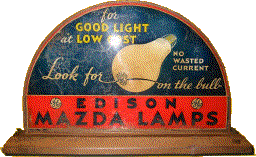
Saint Augustine -- May 2004
The Myth of the OEM Header
January 2005

Saint Augustine -- May 2004
The Myth of the OEM Header
January 2005
|
People often ponder the source of the Miata's appeal, and to me much of it surrounds the obvious attention to detail and commitment to excellence of its design team--their concept of the "oneness of horse and rider". These manifest themselves in many ways in the final product. Unusual for a mass-produced automobile, the Miata is made up of a combination of design and production decisions affecting overall performance that were done with; 1, no consideration to cost; 2, a remarkable balancing of both performance and cost; and 3, a very well-executed cost-driven "it will be better than average" approach (the incredibly tacky plastic center console is perhaps one exception to all of this). Unfortunately the exhaust system, from the header to the tip, was left to category 3. The exhaust system is so obviously wanting, that replacing everything from the catalytic converter back (a "Catback" system) with an aftermarket system is probably the single most often performed modification in the Miata community (there's a list of vendor links below). Further evidence of the OEM exhaust system's landing squarely in category 3 is the highly touted (in Miata marketing literature) tubular header, apprarently marketed so well that it has given rise to one of the most persistent myths within Miatadom, the assertion that the OEM header "is not that bad", "was designed for high-performance", "is as good as any aftermarket header", etc.--these assertions are most often invoked when someone asks whether they should add an aftermarket true high-performance header, which inevitably prompts statements to the effect that aftermarket headers provide only minimal gains, and reiterations of the myth's contentions. So, the first thing I want to say is... The OEM header is
barely better than a plain old cast iron manifold... The runners are unequal in length (photo 1), horribly bent (photo 2) with all sorts of undulations and swages, and far too short to provide any semblance of effective scavenging at low and mid engine speeds. Beyond this, the tubes are forced into pie-shaped sections of less than 1/2 their original area (photo 3) where they join into what can only be euphemistically called the "collector". Photo 1 shows the underside of the header, with the individual tube's lengths (8", 9", 12", and 14") shown in yellow; photo 3 shows the restriction imposed by the poorly designed collector junction. |
||
|
1. |
||
Miata Exhaust System Links
| Miata.net -- Pretty close to THE Miata information source... |
| Classic Miata -- A new forum for owners of '89 to '98 Miatae... |
| BR Performance -- BR Performance's supercharger forum... |
| State Traffic Laws -- A summary of state traffic and speed laws... |
|
Aerodynamics Whitepaper -- An excellent layman's guide... |
| 1997 Miata and 1964 Triumph Spitfire -- A "side-by-side" comparison... |
Return/Goto My Miata Home Page

Persian mythology gave the name Ahura Mazda
to the god of light...
cliffyk@paladinmicro.com